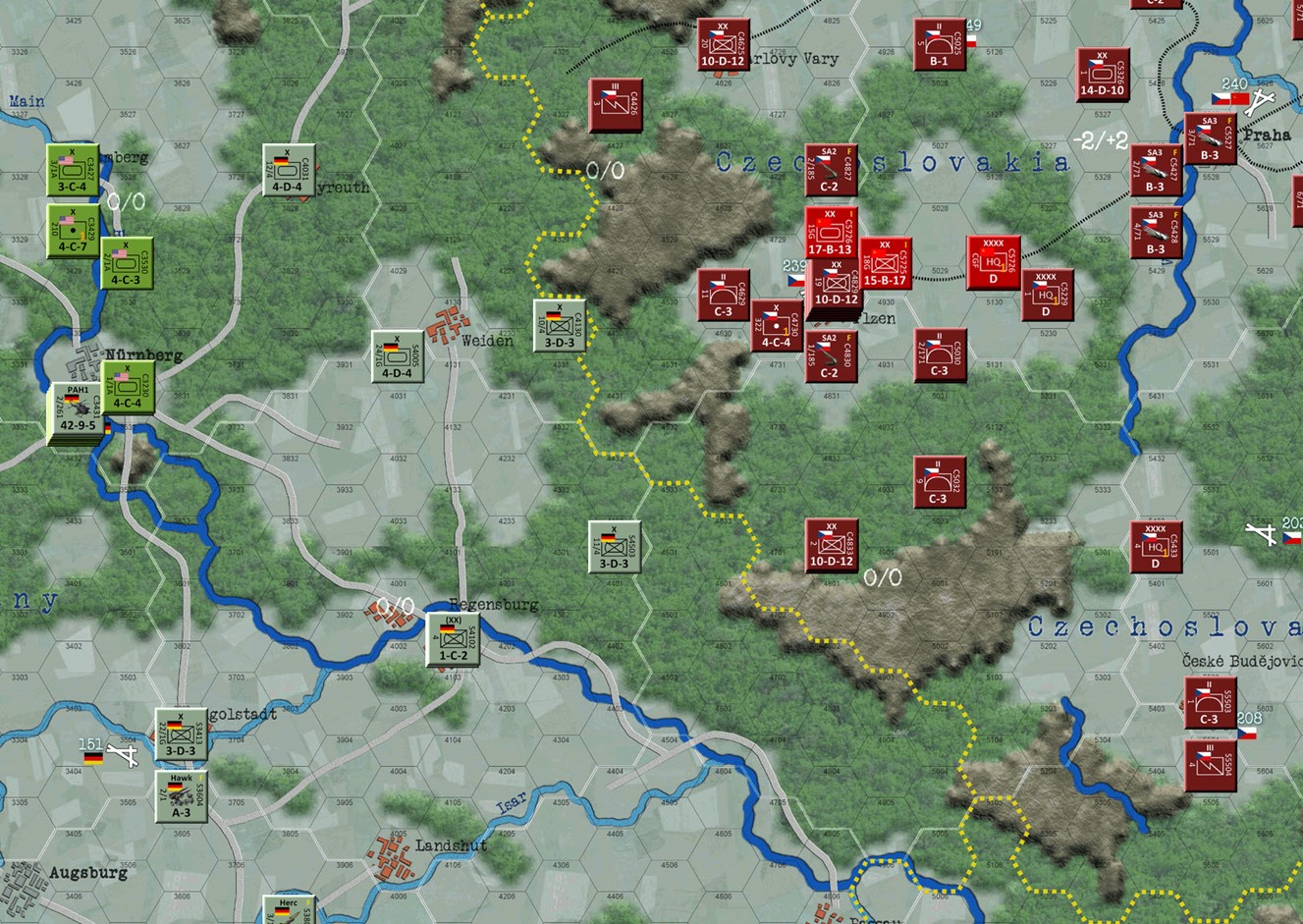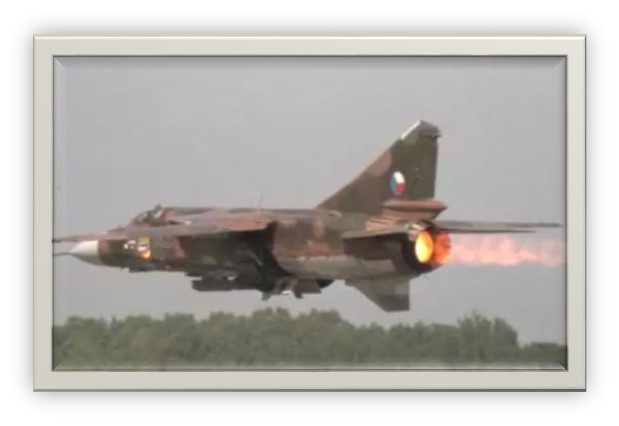Prior post here and here
Zone 7.
US applies its AWACS technology and a significant complement of F15/F16 and supporting Canadian and German F4F’s and CF 18.

A lone Wild Weasel Squadron sought Airtime we be RTB’d his backside.
The outcome in Zone 7 was devastating for Warsaw Pact forces.

US Airforce units faced off against weaker Mig 21’s, and Mig 23’s from under trained and low hour rated pilots. That and the AWACS advantage took its toll.
The average DRM for NATO was +4 often plus +5 .
Overall include SAM/AA/FLAK losses as well as aerial combat the NATO team lost 6 steps and took 10 damage indicators. Whereas the Soviet/Warsaw Pact took 40 damage markers and 37 lost steps in the opening aerial combat. NATO inflicts 4:1 damage steps and nearly 6:1 step losses. But just two complete Soviet units lost. It is interesting to note that damage has little impact until end of turn where availability becomes a problem for the next turn. We shall discuss that later on.
What will the impact be? Many air units were used in this effort leaving limited reserves for CAS [just 11 squadrons], however given the massive AA capabilities of the Warsaw Pact this is much akin to flying suicide missions trying to do CAS.
NATO controls just two air zones – The Hamburg Area and the Fulda Gap area. East of these are four additional zones that went un contested. Additionally
in Zone 6 around Hamelin the US took a massive toll on WP air but failed to hold on, this is an at risk area for ground combat on Turn 1 IF the WP machine drives west and North towards Gottingen and from there between the Weser and Leine Rives to Hamelin- Hannover. A supporting attack from direct East of Hannover would present serious challenges to the NATO forces. Now in order to do that effectively Kessel would probably need to be taken and probably the crossroads NW of Fulda.

Further North the Hamburg area really only has 2 interceptors, and there are significant bombing resources at the WP disposal. Which is why arty was moved up as a support resource and we will be relying heavily on chopper based capabilities for CAS. The other potential threat is a strong push from the border South towards Nurnberg. There at the Hof Gap are many US units with strong capabilities, but once again no air support, and the US will rely on powerful arty resources. Further South still German forces moved towards the border to pre-empt any Czech efforts and lightening attacks by the 16th and 18th Guard. Supply challenges there will limit the effectiveness of any efforts by the WP in that area… I hope.

Wonderful report! I’d love to know how many interceptor squadrons NATO kept in reserve, looks like most of 4ATAF and 2ATAF have been committed to AirSup….
i cant say for certain
Nice AAR!